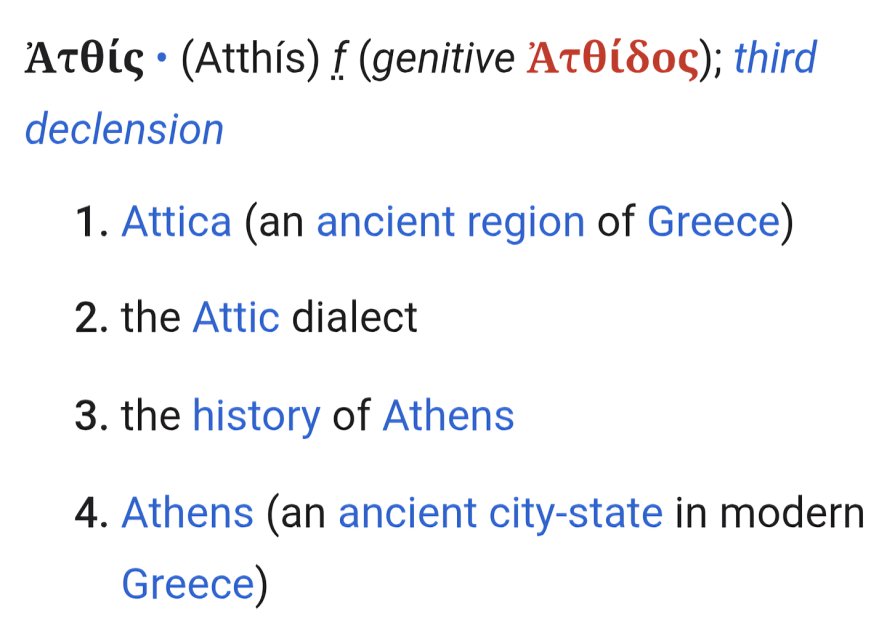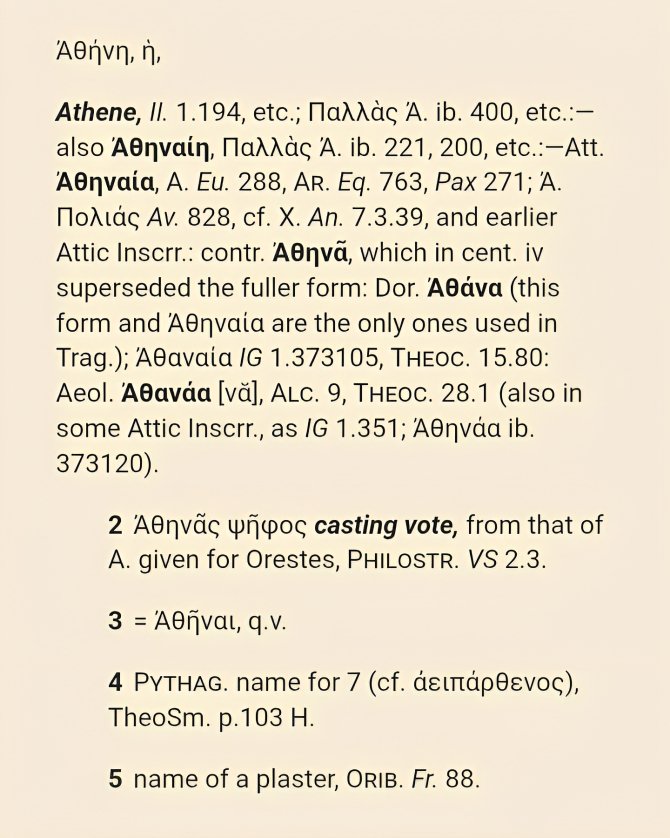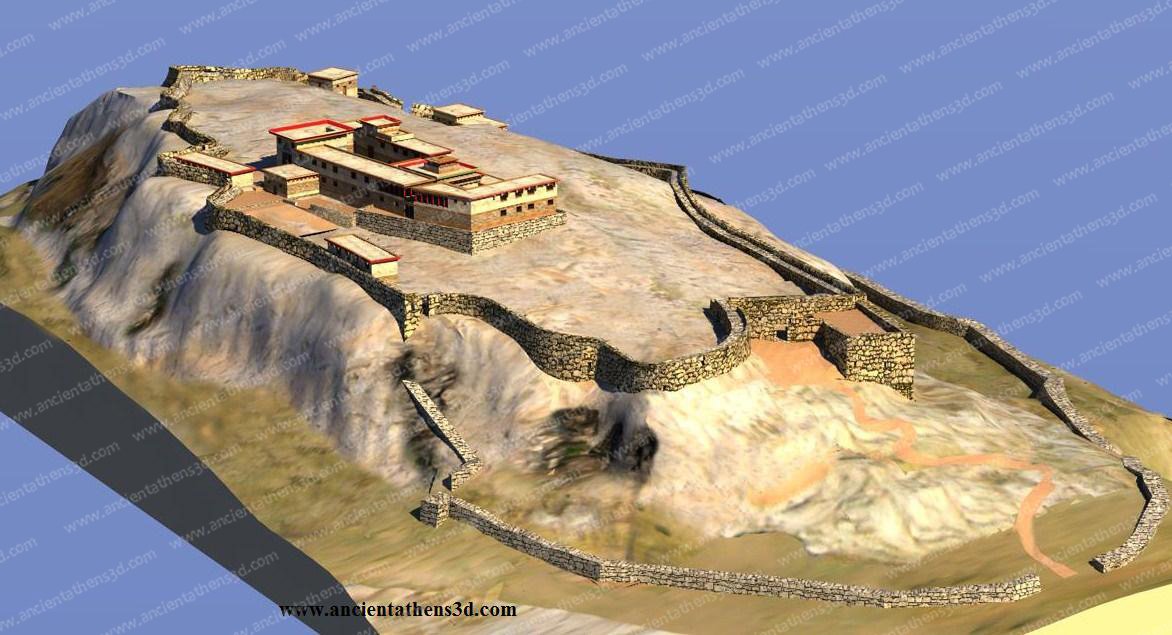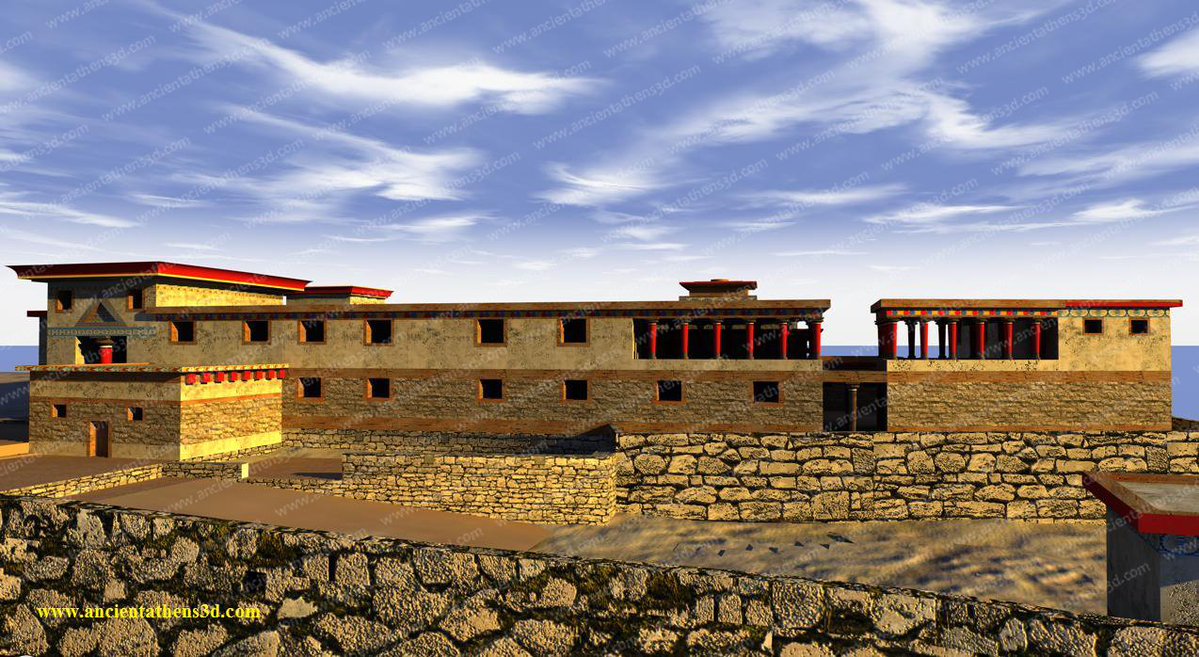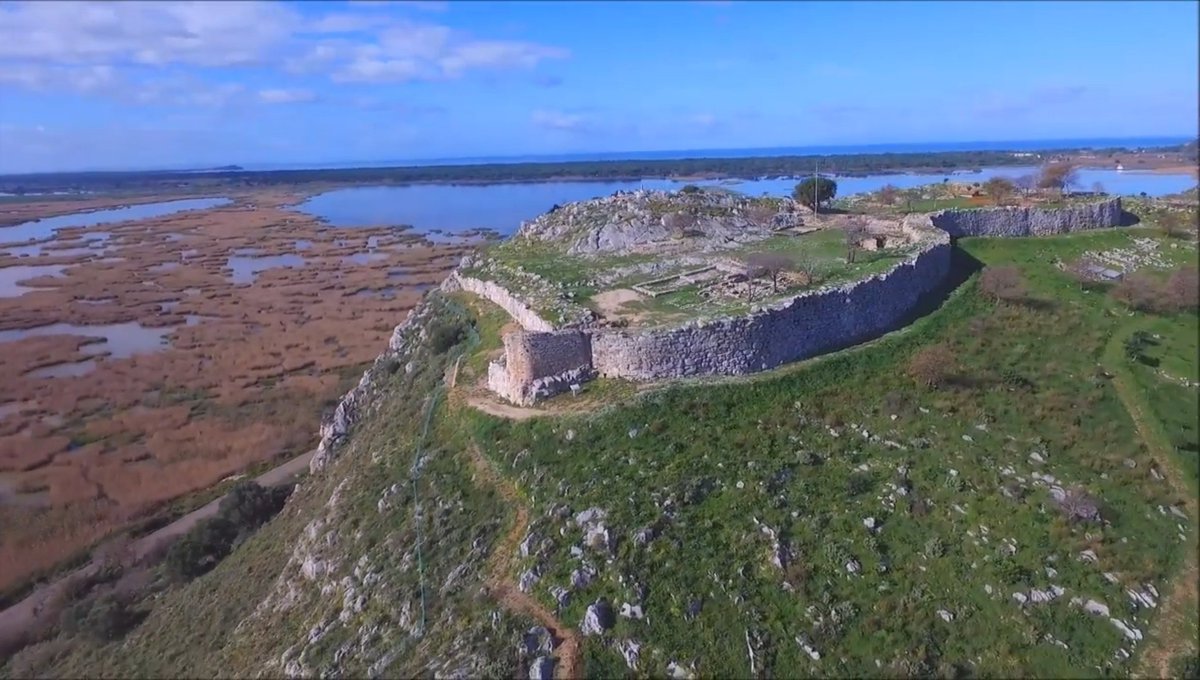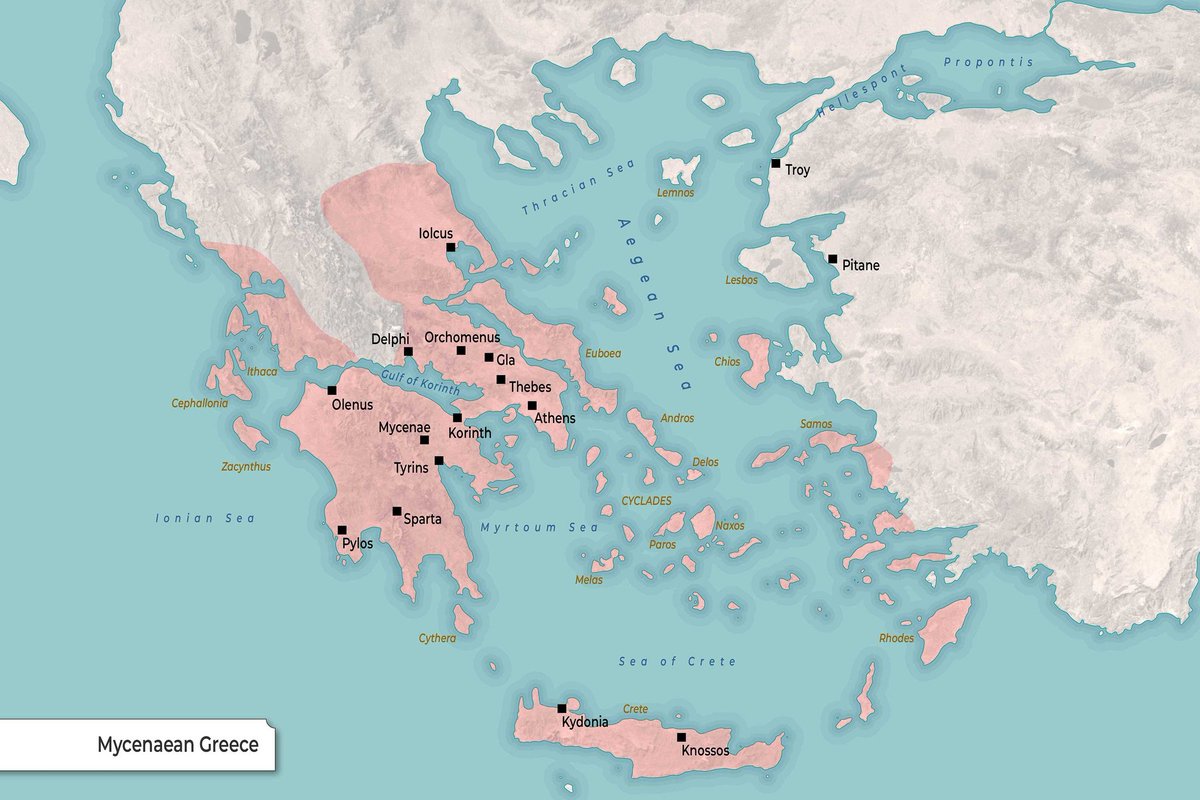1/ The Greek colonization (8th-6th century BC) was one of the greatest feats of Hellenism, both in terms of the extent of the spread of the venture, and as to the meager means of the time which were available to support a so grand endeavour.
#Cyrene #Thera #Greek_Colonisation
#Cyrene #Thera #Greek_Colonisation
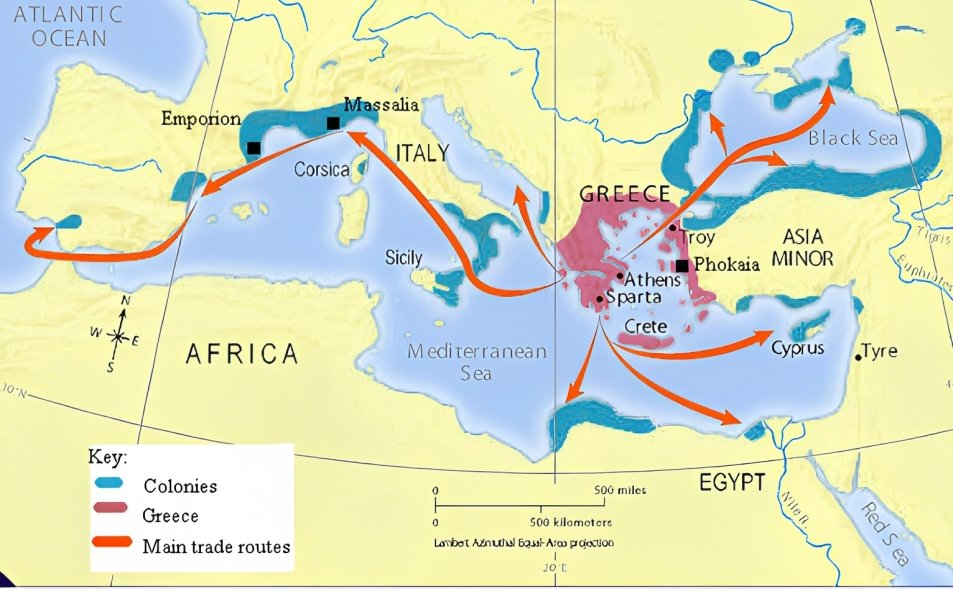
2/ The adventurous colonization venture carried out by the Dorian settlers of Thera, who left their barren island and in search of a better future, followed the southern Mediterranean sea trade route, establishing Cyrene on the Libyan coast, is included in this context. 

3/ As Herodotus reveals to us in great detail in the fourth book of his Histories, when the king of Thera, Grinnos, went to Delphi to receive an oracle regarding matters of the island, Pythia answered him that he should build a city in Libya. 

4/ Grinnos being old could not meet the demands of such a demanding undertaking, while on the other hand the Theraeans did not know where Libya was, nor did they dare to send colonists in an unknown direction. So the oracle was neglected. 

5/ But this negligence of theirs brought a period of intense drought to the island for seven consecutive years, where everything dried up except the trees. Desperate, the Theraeans turned again to Delphi, where Pythia repeated the fulfillment of the first oracle 👉 

👉 about the establishment of a colony in Libya. From the above we conclude that Archaic Thera consisted of poor farmers who, due to a famine that hit the island, were forced to migrate in search of a better agricultural land. 

6/So the Theraeans sent envoys to Crete in search of someone who had gone to Libya. In the city of Itanos they found Corobius,a murex fisherman, who had previously arrived in Libya by being carried away by the wind and even to an island called Platea. In the person of Corobius 👉 

👉 is indicated the intermediation of Crete in the Greek colonization of Cyrenaica as a bridge to Africa, while his professional activity as a murex fisherman indicates Crete's participation in the trade routes of the Phoenicians, who had the exclusive exploitation of murex. 

7/ The Theraeans gave money to Corobius and took him with them to Thera from where Theraean scouts set out with him to find Platea, as it happened. The Theraeans left Corobius in Platea with several supplies and left for Thera to announce the news. 👉 

👉 The abandonment of Corobius was not the result of the idiosyncrasy of the Theraeans, but instead it was a composed and responsible move, because the presence of just one person was enough to confirm the possession and ownership of a place. 

8/ But the Theraeans didn't return to Platea and Corobius' supplies ran out at some point and he'd not have had a good end if he had not been helped by some Samian sailors who, following the southern sea route,drifted to the island and hearing his story fed him with new supplies. 

9/ In the meantime the Theraeans, arriving at their island, announced to their compatriots that they had founded a colony on the Libyan island of Platea and so it was decided after a lottery to carry out 👉 

👉 a small colonization mission with the participation of all the settlements of the island and under the leadership of the other king, Battus, who represented the pre-Hellenic element of Thera. 

10/ The Theraeans created a settlement in Platea,but after two years they did not see any progress and so they turned for the third time to the oracle of Delphi, with Pythia giving them a new oracle that their sufferings would end when they would founded a colony in Libya itself. 

11/ So they return to Platea and head to the opposite coast where they establish a colony called Aziris in a location was surrounded by wooded gorges, while a river ran through one of these nearby gorges, providing water for themselves, animals and their fields. 👉 

👉 At this particular site, which is now arid, barren and windswept, the archaeological hoe has brought to light Theraic pottery sherds dating to the 7th century BC. 

12/ In Aziris the Theraeans lived for six years, but in the seventh year the local Libyans rose up against them because the two communities lived very close to each other and there were frictions. 👉 

👉 So the Libyans led the Theraeans to a fertile oasis was called the spring of Apollo, where they founded Cyrene. The colony was built on a hill full of springs, easily fortifiable and dominating on a fertile plateau suitable for large agricultural crops. 

13/ In order to strengthen the Theraean colony in Cyrene, the Cyrenaeans invited settlers from all over Greece to come to their city and share their land; a call that also found support from the oracle of Delphi with the announcement of a pan-Hellenic oracle. 

14/ The great response that the call of the Cyrenaeans had in the Hellenic world led to tension with the local Libyan populations, who asked for the help of the Egyptians. However, the Greek phalanxes crushed the Egyptian forces outside Cyrene with few Egyptians returning home. 

15/ The conflicts with the Egyptians came to an end during the time of the last Pharaoh Amasis II as a result of the rise of the Persians, who conquer Egypt in 525 BC and force Cyrene to submit to their rule. 👉 

👉 it was a period of big prosperity for Cyrene, as evidenced by the extensive necropoles with their rich offerings, the original works of sculpture, the impressive innovations in temple architecture and the coinage. 

16/ However, the presence in Cyrene of citizens from various regions of the Hellenic world created, over time, intense problems of coexistence between them within the city, resulting in the creation of internal tensions in which the respective metropoles also participated. 

17/ In order to deal with the situation the inhabitants of Cyrene resorted to an external reformer Demonax from Mantinea, who drew up a Constitution that provided for the classification of the population into three tribes,as well as the preservation of the monarchy's institution. 

18/The symbiosis of the citizens and the stability of the state were ensured so that two centuries later,all Cyrenaeans could recognize Thera as their common homeland,proudly transcribing in marble the original text of the oath of their ancestors on moment of departure for Libya. 

19/ Of particular interest is the reference regarding the equal, but also mandatory, choice of the colonists with the violators to face the death penalty. 👉 

👉 Their return was possible in case of failure, but not before five years had passed, with those who returned home early being chased with stones by their countrymen, who prevented them from disembarking. 

20/ Thus Cyrene found political and social calm and emerged as a strong economic center. However, a native plant unknown to the general public contributed to the prominence of Cyrene, whose inhabitants had a monopoly on its cultivation, collection and distribution: the silphium. 

21/ The silphium was used in antiquity as a spice, aromatic and mainly as a medicine with various useful properties. It was the staple of Cyrenaic trade and was so important to the local economy that most of the city's coins bore the image of this plant. 

22/ So valuable was the silphium to ancient civilizations that the Cyrenaeans kept it in special underground warehouses, along with the city's gold and silver reserves, before it was exported to foreign markets, while Pliny mentions that the sylphium cost its weight in silver. 

• • •
Missing some Tweet in this thread? You can try to
force a refresh






